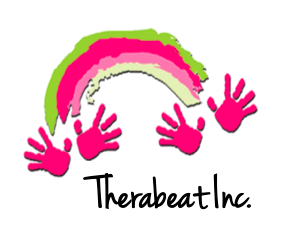The ability to effectively communicate is a need for all humans. There are many modes of communication, but the ability to speak and be understood is a goal for many individuals. Music therapy is beneficial for the improvement of speech, and can have a profound impact on an individual’s sense of well-being and social functioning. Melodic Intonation Therapy (MIT) was developed in the early 1970’s, and is a useful technique used for speech development. MIT greatly benefits patients with traumatic brain injury, adults in rehabilitation settings, patients with evidence of apraxia, and those who are verbal, yet non-fluent. MIT targets the damaged, dominant left-hemisphere of the brain (which primarily controls language) by “exaggerating the intonation (rhythm, stress, and melodic contours) of speech in the undamaged right hemisphere” (Norton, 2009). As the right hemisphere of the brain recognizes language in melodic and rhythmic structure, it essentially learns language along with the left hemisphere.
In practice, MIT assigns a simple rhythm and melody to a short word or phrase. MIT is designed to take patients through a series of steps, and each step is slightly more complex than the one preceding it. Each syllable of every word is assigned a beat and a specific amount of stress. The higher stressed syllables have higher pitches, and the lower stressed syllables have lower pitches. Here is a visual example of a useful phrase for MIT:
With this phrase, the syllables how, do, and to are the most stressed, and are assigned to higher pitches.
There are approximately five steps to take in each word (or phrase) of MIT. Once these steps are completed with 90% accuracy, the therapist can transition the patient to a phrase that is longer and more difficult to enunciate (such as the phrase above). In beginning MIT, an ideal first phase would be the use of a single word. The steps of each phase are listed below:
Step 1: Humming. The therapist will tap the patient’s left hand (triggering the undamaged right hemisphere of the brain, and the sensorimotor cortex of the right hemisphere) and simply hum each syllable with their assigned pitches. The patient will then hum with the therapist.
Step 2: Unison Intoning. The therapist will say the word/phrase along with the patient.
Step 3: Unison with Fading. The therapist will say the first half of the word/phrase with the patient, and then stop speaking halfway through. This allows the patient to complete the rest alone.
Step 4: Immediate Repetition. The patient will immediately say the complete phrase alone.
Step 5: Response to Probe. The therapist will ask a question prompting the patient to say the word/phrase being practiced. For example, if my patient is named Mia and I ask for her name, she will respond with “Mia.” Here is a video putting each of these steps into action.
Whether our friends at Therabeat are learning language, reganing language, or learning to use language more effectively, MIT is indicated for all cases. The use of MIT allows for both sides of the brain to work on the apprehension of language. Results from MIT include improvement in articulation, fluency, and prosody of speech. This gives our patients the tools to be confident in communicating with others. As therapists, furthering our knowledge in these research-based techniques can better our efforts in aiding our patients in successful speech and enunciation!
Until next time,
Mia Cellino, Music Therapy Intern
References:
C, Cait. (2013, November 21). Melodic Intonation Therapy clip [Video File]. Retrieved from https://youtu.be/zr69bmqBU14
Norton, A., Zipse, L., Marchina, S., & Schlaug, G. (2009). “Melodic intonation therapy: shared insights on how it is done and why it might help.” Ann N Y Acad Sci, 1169(1), 431-436. Doi: 10.1111/j.1749-6632.2009.04859.x







